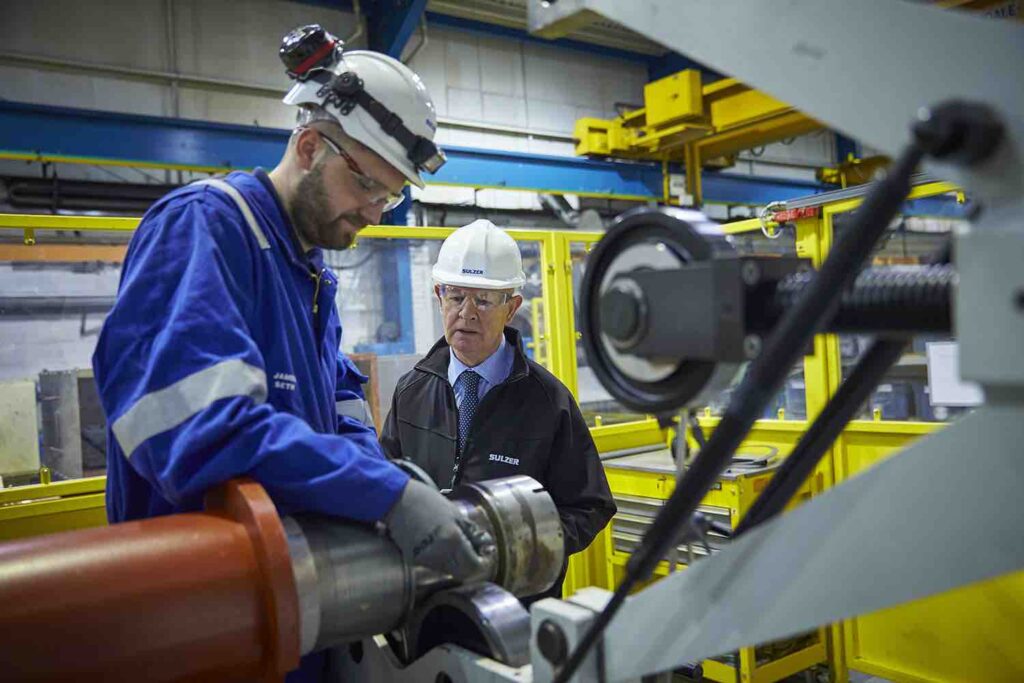Big chemical production sites measure their lifespans in decades. From the outside, a plant may look very similar from one year to the next. Behind the scenes, however, operators are continually adjusting and adapting their facilities to boost yields, drive down costs and integrate new technologies. For one chemical plant in Singapore, uprating, not replacing, a critical pump enabled a shift to higher pressure operation six months faster, and at much lower cost
Chemical processing is both energy intensive and competitive, so any advantage that can be achieved that will improve a process or reduce costs will be assessed carefully. Consequently, a project that could achieve both of these objectives would be very attractive to the plant operators.
In this case, the plant was planning to increase the operating pressure in a key process, but the project team knew that the change would exceed the 38bar maximum allowable working pressure (MAWP) of a large condensate pump. To tackle this challenge, the procurement team began looking for a brand-new pump.
The pump in question was a VS6 type barrel design, with seven impellers mounted on an extended shaft. That shaft passes through the suction and discharge section of the pump, via a seal and balancing section to the drive motor, and the whole unit is encased in a caisson to create a net positive suction head.
More cost-effective solution
Since the existing pump was a Sulzer unit, the team initially asked the global pump specialist to quote for two new pumps capable of meeting the revised operating requirements. They explained that they needed one working pump and another in reserve, allowing periodic exchange for maintenance and repair. That conversation led Sulzer pump experts in Singapore to propose an alternative approach that could save its customer time and money.
After visiting the site to examine the customer’s existing spare pump, Sulzer confirmed that it could make selective upgrades to the original pumps, then test and re-certify them to comply with the new 45 bar MAWP and all relevant reserve and safety factors.
Once the plan was agreed, the spare pump was transferred to a Sulzer engineering facility in Singapore, where it was stripped down for analysis. Since the pump had spent time in service, it was exhibiting all the usual signs of a hard-working life, including extensive corrosion to wear parts such the impellers. Sulzer’s team of pump experts identified several components for replacement and subjected the remaining parts to detailed inspection including dye penetrant testing (DPT).
Selective upgrades
In parallel, Sulzer engineering specialists designed a new caisson with thicker walls, to cope with the higher working pressure, and upgraded material, to provide improved corrosion resistance. They also rerated the seal system to cope with the new operating parameters.
The new seals, caisson and other replacement parts were manufactured at a specialist Sulzer facility in Germany, then shipped to Singapore where the pump was reassembled, hydro tested and certified for the higher MAWP. The completed pump was installed and commissioned by Sulzer field engineers at the customer’s site.
Fast, safe and sure
The entire upgrade process took only six months to complete. That allowed the company to stick to a tight schedule for its overall plant revamp project. As an additional benefit, the cost of the re-rate project was significantly lower than the cost of two new replacements by USD 200’000. With the original pump now in operation, the Sulzer team has since completed the same set of upgrade tasks on the customer’s second unit.
As process plants grow and evolve, it is common for the operating requirements of critical equipment to change. To maintain safety and ensure long-term reliability, it is vital that such changes, especially pressure increases, do not push components beyond their certified limits.
Sulzer’s pump diagnostic, upgrade, retrofitting and maintenance services, backed by its knowledge as a leading OEM, allow customers to extend the capabilities of their equipment, with the confidence that every unit has all the necessary testing and documentation to detail the changes made and provide proof of safe operation. Furthermore, by choosing the retrofit solution instead of installing new machinery, the carbon footprint of the project was minimised, supporting the sustainability aims of the customer.
 Engineer News Network The ultimate online news and information resource for today’s engineer
Engineer News Network The ultimate online news and information resource for today’s engineer






